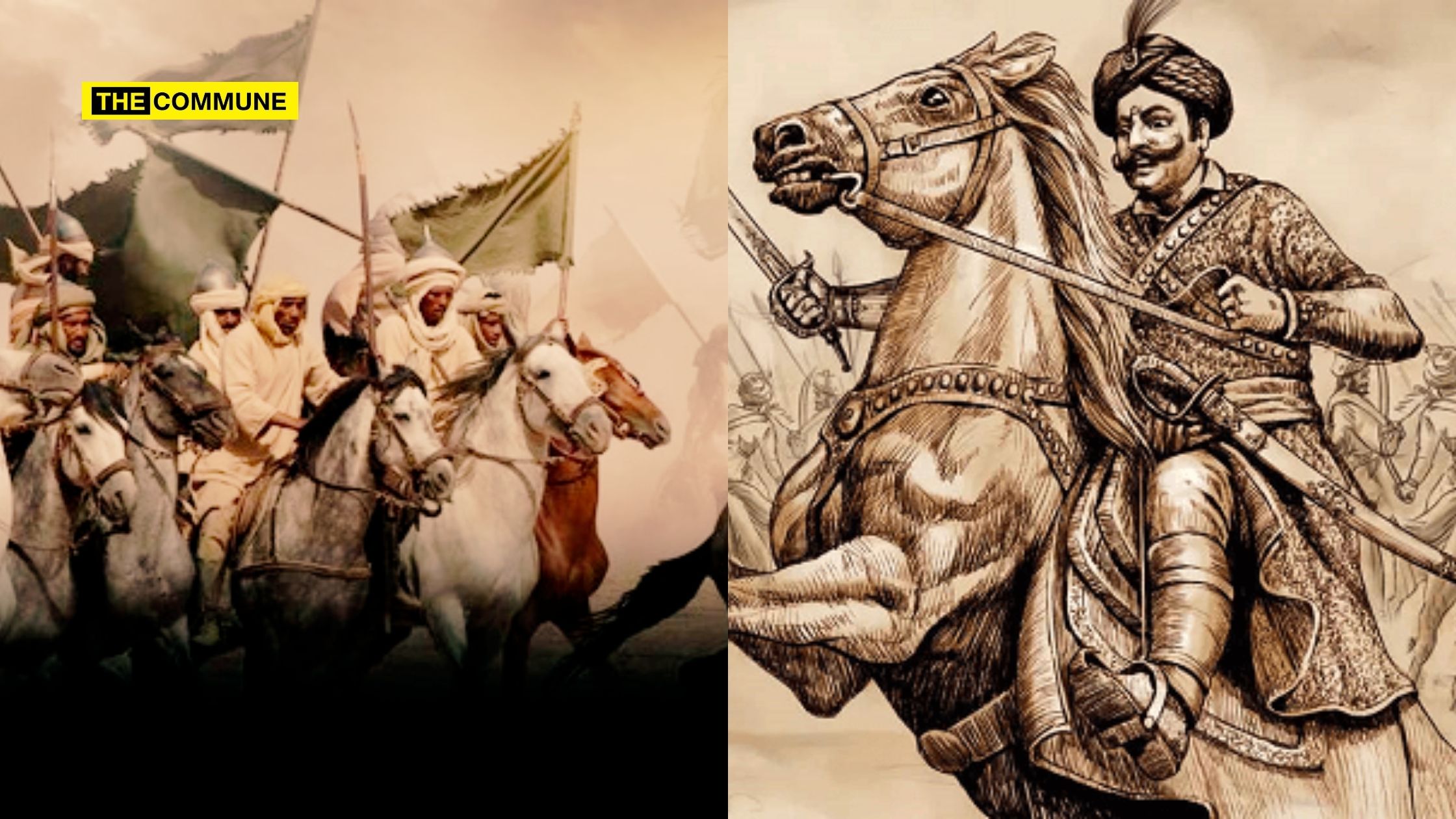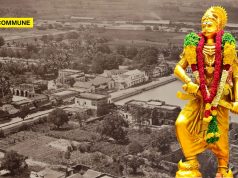
Not enough has been said about the great emperors of Bharat who fought as a united confederacy to protect this sacred geography from countless barbarians who wanted to massacre natives and plunder this country.
On the 78th Independence Day, let’s crush the myth that India was always just “a union of states” and had fragmented leadership that fought each other mindlessly until a coloniser came along and unified them under one government.
Here is a story of a great Hindu confederacy that crushed the Arab ambitions to conquer India. It is a story of great Bharatiya kings who anticipated, prepared for, collaborated and successfully crushed foreigners who wanted to commit the same atrocities upon us that Bangladeshi Hindus are facing now.
The Sindh Massacre
Before the British, there were the Arabs, before the Turks, and before the Persians. And before them all, there stood a rampart of Indian valour, a bulwark against barbaric ambitions.
It all begins before the coronation of Lalitaditya Muktipada, the fourth ruler of the Karkota dynasty in Kashmir. He ascended the throne in 724 CE and was well aware of Mohammad Bin Qasim’s attack a decade earlier on Sindh.
Sindh was ruled by a Brahmin family founded by Chacha Rai. They had valorously repelled the repeated Arab onslaughts ordered by several Umayyad Caliphs at Thane (636 CE), Bharuch (643 CE) and Debal in Sindh (643 CE). However, in 711, Qasim attacked Sindh as an act of Jihad and massacred the entire male population of the town, including Raja Dahar, in a gory blood bath. An insider had treacherously sided with Qasim.
The echoes of this massacre reverberated across the land, a chilling reminder of the barbarity that awaited if Bharat were to fall into the wrong hands.
Interestingly, Qasim was killed shortly after capturing Sindh by the same Caliph who sent him. Raja Dahar’s brave daughter, Suryadevi, misinformed the caliph that Qasim had “used her first” before presenting her for the Caliph’s harem.
After Qasim was killed by the Caliph’s soldiers, Suryadevi and her sister Parimaldevi were buried alive after they proudly told the Caliph that they had lied to avenge their father’s death. That was the end of Raja Dahar’s rule and lineage.
Junayd-al-Murri, Arab Governor Of Sindh
When Lalitaditya became the king, he knew that the new Arab governor of Sindh, Junayd-al-Murri, planned to attack Kashmir the way Qasim attacked Sindh.
Lalitaditya was a man of action. He recognized the need to modernize his army to counter the Arab advantage in cavalry. Arab forces had the advantage of using horses and camels that moved faster than the elephants that Indian kings were using. By combining elephants with a formidable force of horsemen and foot soldiers, he created a military machine capable of matching the invaders on their terms.
Junayd didn’t know what hit him when Lalitaditya, with audacious strategy, preempted the invasion. He crossed the Punjab border, surprised Junayd’s forces, and inflicted a crushing defeat before returning to his capital triumphantly. Junayd never dared to attack Kashmir again.
But, Junayd shifted his focus southwards after his plans to invade Kashmir dashed against the rocks of Karkota King’s resolve.
The Arab Governor conquered Kangda, Jodhpur, Jaisalmer, and Bharuch, carving a swathe through the heart of India. But Lalitadiya quickly thwarted his ambitions.
Hindu Kings United In A Battle For Bharat
By this time, Lalitaditya had formed a military alliance with several Hindu kings and shared intelligence from his past campaigns. This confederacy of Hindu kings, from the Himalayas to the Deccan, rose to challenge Junayd’s onslaught.
This formidable alliance formed a military confederacy that included:
North India: Lalitaditya Muktipada of Kashmir, and the Gurjara Pratihara king Nagabhata I of Ujjain.
East India: Kingdoms under Gurjara Pratihara kings in the Ganga basin, such as those in Bengal and Bihar
West India: The Lat king Pulkeshiraja and Gurjara ruler Jayabhat IV were key players in the western theatre, along with the Guhila ruler Bappa Rawal of Mewar.
Central India: The Gurjara Pratihara king Nagabhata I, based in Ujjain, played a pivotal role in the heart of the country.
South India: The Chalukya king Vikramaditya II, ruling from Badami in Karnataka, and his feudatory Rashtrakuta ruler Dantidurga joined hands with Lat king Pulkeshiraja as southern bulwarks against Arab expansion.
Together, the confederacy of these kings formed an impenetrable wall against Junayd’s ambitions. Their combined forces inflicted heavy losses on the Arabs, forcing them to abandon their expansionist plans.
The Sindh governor had now suffered three knocks after what had seemed an invincible Arab conquest in Sindh, Multan, Balochistan and Gandhar.
Junayd later decided to move menacingly towards Central India, towards the King of Kannauj, Yashovarman. But in a diplomatic checkmate, Lalitaditya and Yashovarman joined hands in a strategic alliance and defeated them ruthlessly.
The Caliph recalled Junayd and made Tamim-al-Utbi the new governor. Lalitaditya later chased Tamim away, too.
Thereafter, it took nearly three centuries for invasions from the West, starting with the Turkish forces of Ghazni, to even consider invading India and her frontiers.
Conclusion
There are many such stories of Hindu confederacies across India that valorously fought proselytizing armies at different times.
Here is another example shared by X handle @HindutvaItihas – In 1325, shortly after the Kakatiyas’ fall, a coalition of 75 Hindu chiefs in Telangana and Andhra Pradesh, led by Prolaya Nayaka and Prolaya Vema Reddi rose to uphold Dharma. They successfully liberated Warangal, the Andhra coastline, and north Tamil Nadu from Muslim control. By 1335, they defeated Delhi’s defenders, Harihara and Bukka, at Anegundi, further strengthening their resistance. It was out of this struggle that the mighty Vijayanagara Empire was born.
Sadly, these stories are overlooked in our history books. They are tales of courage, unity, and strategic brilliance put up by Bharatiya powers against an expansionist global hegemony. The kings and warriors of this era were not merely defenders of their kingdoms; they were guardians of this Dharmic civilization.
It is time to reclaim this lost narrative. It is time to celebrate the heroes, from the Himalayas to the Deccan, who united against waves of marauding invaders. Let’s recognize that India was never a mere collection of disparate states but a unified nation, a civilizational powerhouse that inspired awe and fear in its enemies.
(This article is based on a chapter from Dr. Vikram Sampath‘s compelling work, “Bravehearts of Bharat,” which delves deeper into the heroic tales of India’s forgotten warriors.)
Jayasri Viswanathan is a journalist and columnist.
Subscribe to our channels on Telegram, WhatsApp, and Instagram to receive the best stories of the day personally.




